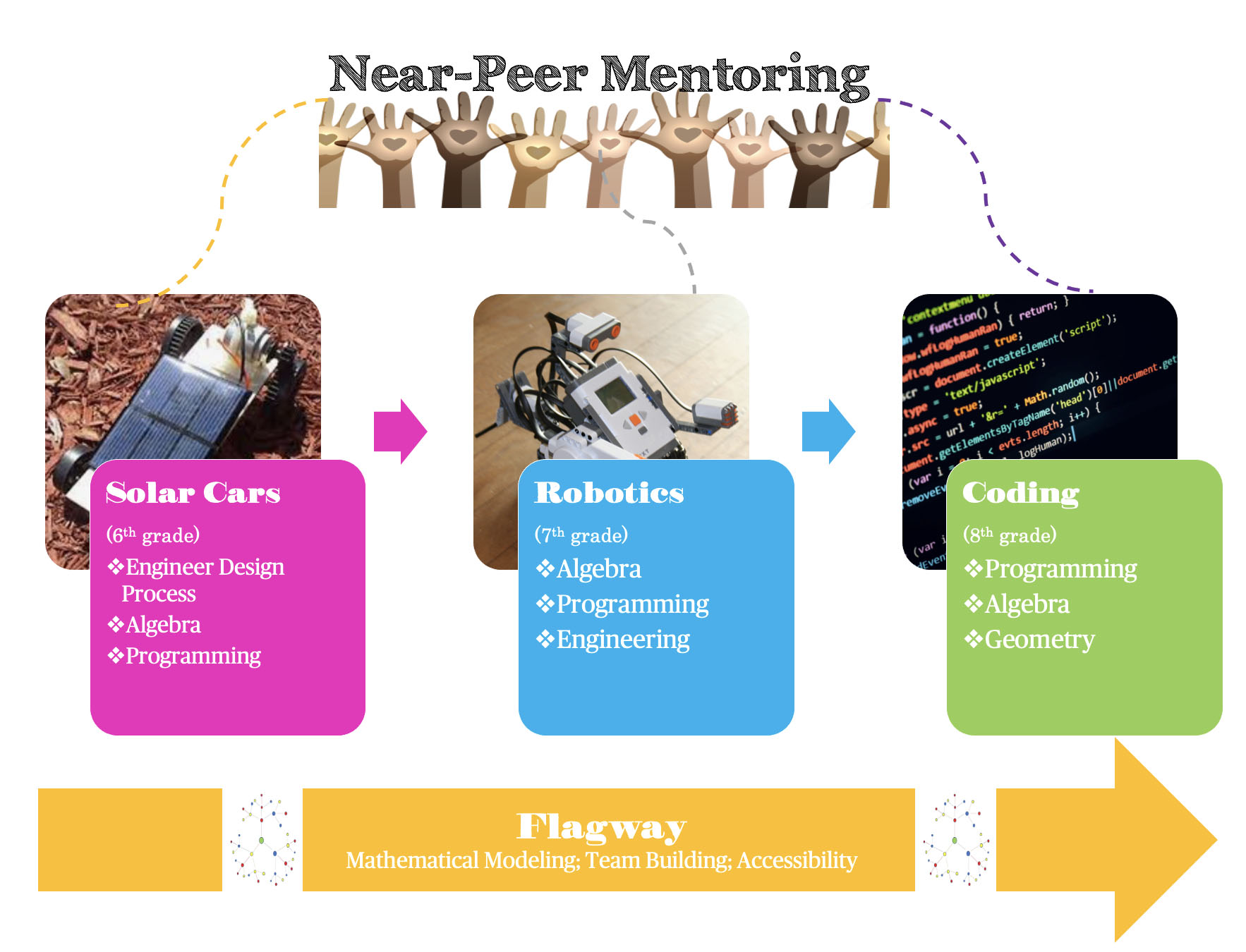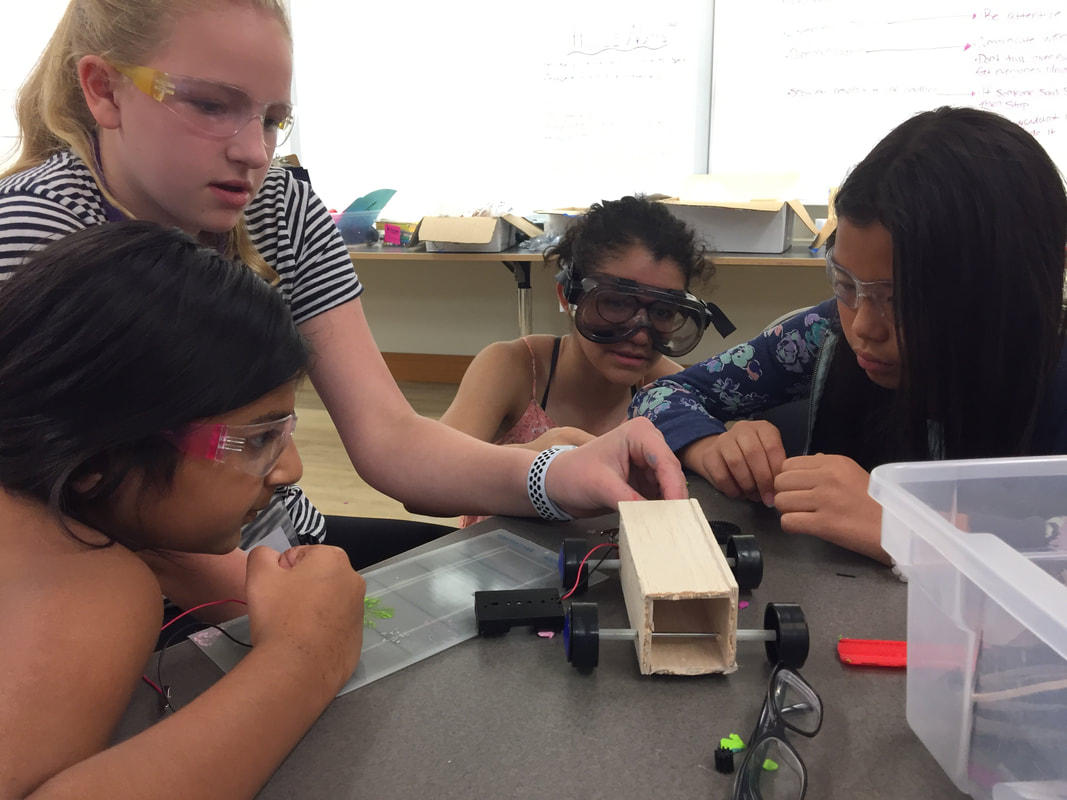
inSTEM's learning environment is built around a love of learning, collaborating with peers and mentors, and bringing the participants' creativity to life. Our programs combine Science, Technology, Engineering and Mathematics using problem-based learning. In addition, inSTEM involves mentorship and female empowerment by nurturing and encouraging girls (especially those in underrepresented populations) to learn about STEM areas as an option for high school, college, and professional studies.
All of our activities are designed to empower these young women and engage them in all that science, technology, engineering and math have to offer.
The inSTEM Approach
Creating a hands-on experience
Spark creativity and develop problem-solving skills
- Constructivist learning environment
- Fixed Mindset versus Growth Mindset
- Engineer design process
Jean Piaget and Lev Vygotsky’s social development theory promotes learning contexts in which students play an active role in learning. The roles of teachers and students are shifted at inSTEM. Educators and staff members assume the roles of facilitators, working alongside to collaborate with participants in order to help facilitate meaning construction in student’s learning experience. Learning therefore becomes a reciprocal experience for the students and teacher. Constructivism gives students ownership of what they learn, since learning is based on students' questions and explorations. Engaging the creative instincts develops students' abilities to express knowledge through a variety of ways. The students are also more likely to retain and transfer the new knowledge to real life.
Connecting STEM subjects to real-word examples

Explore STEM application through STEM activities
- SGH Civil engineer (Project Based Learning)
- Computer Science (Programming)
- Engineer Design Process
- Idea, construction, experiment
At inSTEM, our participants engage participants in real-world problems fueling their curiosity. We challenge all students with finding solutions to real-world problems that promotes STEM application and critical thinking skills. The learning relevant is through explicit experiences that require students to engage tactilely and kinesthetically with rich lessons. Recently, four wonderfully intelligent and creative women engineers at Simpson Gumpertz and Heger (SGH), teamed up with inSTEM to bring real-world engineer design challenges into the classroom. The participants were able to engage in the Engineer Design Process faced with problems encountered in concrete construction.
Providing role models
Neer-peer mentorship
Research shows that role models clearly have a positive impact on girls’ perception of STEM subjects. Exposure to successful female STEM role-models can buffer women and girls from the effect of the implicit bias and lead to better performance and greater interest in STEM fields. At inSTEM, we’ve created a near-peer mentorship environment.
DePaul educators lead the professional development of STEM and mathematical mindset,
college mentors develop their facilitator's role through guidance of high school mentors and
high school mentors (many who have come up through the inSTEM program) embed learning in social experience through mentoring the campers.